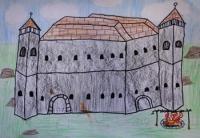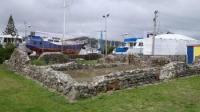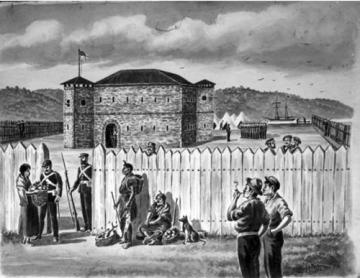Paremata Barracks
The Paremata Barracks were built in 1847 out of stone and brick. However the bricks were not fireproof and the stove that was against the wall set the bricks on fire which almost reached the magazine where the gunpowder was kept. Luckily they managed to put it out. Phew!
The barracks were not constructed very well and took serious damage by an earthquake in 1848. They were completely destroyed by another earthquake in 1885. Today the Paremata Barracks are just ruins and are a sign of the history of Porirua.
The Paremata Barracks were used for the civil war between Māori and Pakeha. Two hundred and twenty men were sent over from England to New Zealand to man the barracks. This order was sent by the creator of the barracks, Governor Grey. It was hard to build the barracks because it was in the middle of winter and the wet and cold conditions slowed the building down and made it hard to build. At one stage the builders ran out of materials so they had to make their own cement to stick the stones together. Unfortunately this didn't work. Soon problems started to occur when they were in a civil war. They needed cannons, so they made special towers where they could shoot from. However the floor in the towers was made of wood, so when they tested the cannons the floor shook so much that no one dared to use them again. The barracks were finished in 1847 but when an earthquake struck the following year they were damaged.
Why were the Paremata Barracks built and how did they collapse?
The Paremata Barracks were built by one of Governor Grey's friends. It was meant to be made out of bricks but he was not given enough equipment. When they ran out of mortar they had to use crushed up shells from the beach. This was not very successful. The Paremata Barracks were finished in 1847 but were damaged by the earthquake in 1848 and destroyed by the 1855 earthquake. Maybe if they had used proper mortar they may be still standing today.
The reason why the Paremata Barracks were built was they knew Te Rangihaeata was going to attack. Governor George Grey made 200 soldiers stay on the top floor. In 1852 the Paremata Barracks were used as a powder store. After the earthquake in 1848, Governor George Grey thought that it was unsafe for his soldiers and so he never used them again.
Paremata Barracks in 2014
Today in Mana, this is all you can see of the barracks.
The Paremata Barracks was a two storey building. The colour of the Paremata Barracks was a dark gray on the roof and light on the walls and the roof was a light, darkish yellow colour. The reason why they built the Paremata Barracks was so they could stop wars. They collapsed because there was three big earthquakes that caused the first floor to collapse and then knocked out some of the second floor. It was built using cement until they ran out of cement. This was when they went down to the beach and found some limestone and shells which they crushed and used in place of cement.
In the early 1840’s, Pakeha settlers formed little armies to protect themselves against the Ngāti Toa warriors. In 1846 Governor Grey arrived and made forts to protect those spots from Māori.
In 1848 the Paremata Barracks had been damaged so badly in the Wellington earthquake that it couldn’t be used any longer.
The soldiers landed on April 29th in 1846 and they were in the 58th, 96th, and 99th Regiments.
The Barracks were built in 1846 – 1847 at the very top of Porirua Harbour by two hundred and twenty men.
It was very hard to work there because it was a cold, wet and windy winter and the tents were rotten and leaked. Food often ran out.
This image shows the stone Paremata Redoubt, with its two towers, surrounded by a yard with a picket fence. A ship visible in Porirua Harbour in the background and soldiers standing in line to attention, with tents in the distance. By the gate in the foreground, a Māori woman is selling produce to a group of soldiers, while another man with fish in a kete, and a woman with potatoes await their turn. Two civilians watch the proceedings from the right, one smoking a pipe.
The remains of this fort still stand in the Ngati Toa Domain, at Mana, just north of Porirua City.
Messenger, Arthur Herbert, 1877-1962. Messenger, Arthur Herbert, 1877-1962 :Historic Fort Paremata, 1846. 1951. Ref: A-173-035. Alexander Turnbull Library, Wellington, New Zealand. http://natlib.govt.nz/records/23156414
By Samuel, Davey, Jonty, Stella, Aaron and Macey.







